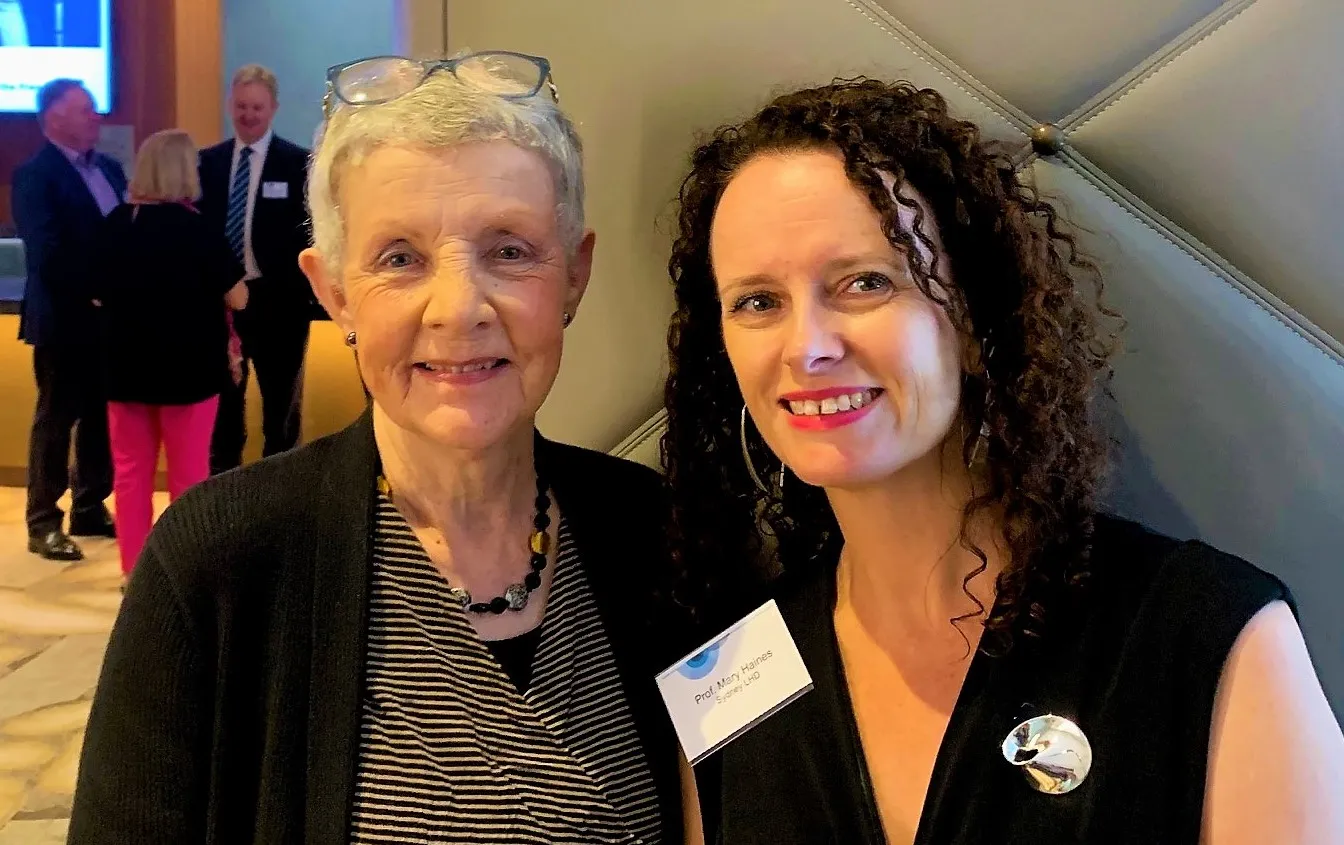
Read time: 2 minutes
Date: 08/2020
I caught up with Professor Diana O’Halloran (AO), WentWest Board Chair and a member of the Western Sydney Local Health District Board.
Di, who has a background in general practice and extensive experience in medical education, organisational change and health system reform, is known to many in health for her commitment to quality patient care and passion for primary care. She is also a conjoint professor at Western Sydney University.
I asked her to share her wealth of insights into what makes for success when developing collaborative projects that integrate care across different healthcare sectors (sometimes called integrated care).
-Mary Haines
(Please note the photo was taken in early 2020 before social distancing requirements were in place.)
Top Tips: Professor Diana O’Halloran on successful cross-sector collaborations
Mary Haines: Based on your experience, what factors have been key to success in projects that require collaboration across different health sectors so that care is better integrated, leading to better patient outcomes?
Di says one of the challenges that needs to be overcome to enable health organisations to develop successful collaborations is to bridge the longstanding gap in culture and understanding between primary and secondary care sectors. The findings of a major review of integrated care carried out by influential UK think tank, the Kings Fund, about a decade ago, remain key to successful collaborations, she says.
“You have to find a vision in common, and problems in common, that you both or all want to solve, and work together to do that. But sometimes the working together is necessary in order to first achieve a degree of respect and understanding between players.”
Mary Haines: Can you give an example of where a collaborative project between different sectors has worked really well?
Di says one of her favourite collaborative projects involved better integrating care across community health and primary care.
“The example I like best is a project where we worked to re-orientate a community health centre into more of a community hub, working proactively with community health nurses and the local GPs to really build up patient-centred care, working across services and sectors to build integration and social cohesion – that I love.”
“You have to find a vision in common, and problems in common, that you both or all want to solve, and work together to do that.”
-Diana O’Halloran
Mary Haines: So what hurdles need to be overcome to further develop integrative care?
Di says one of the big challenges working in primary care is that the health system has historically placed the most emphasis on the acute setting. She suggests that for a general practice to expand its capability and deliver better quality care, it is important to find ways to recognise and reward extra effort made by GPs outside the current system – something that she feels has been extraordinarily difficult to achieve in the past.
“Primary Health Networks have made some progress in that area by rolling out very effective practice support services that help practices upgrade and build their practice teams. However, it has been really difficult to attract investment in primary care to support enhanced quality and capability, so developing that kind of mutual understanding is one of the big challenges and big barriers that we currently face,” she says.
Mary Haines: What advice can you give those in healthcare trying to progress collaborative, integrated care projects?
Di says that past experience has shown that leadership is a key factor.
“Projects often rely on the effort of leadership and the willingness of quality leaders across the system to take things forward,” she says.
However, she warns that sustaining such projects can prove difficult, unless there is adequate support for change.
“So I think where collaboration across sectors has worked in the past has been where there’s been quite a long process of joint development with a real deepening in the understanding and respect of the players that there are different ways of doing things, and that primary care in general is very capable,” she says.
Projects where the acute sector has developed a greater understanding of the capability of general practice, and where specialists have been able to go out and work in general practice (where indicated), have proved really beneficial, she says, particularly where there has been sustained executive-level support for change.
Mary Haines: Are you optimistic about the future of integrated care?
Di says there is a real willingness across the health system to look at different financial models that could underpin better collaborative, integrated care.
“I think we can absolutely get this right in the future because there is a willingness to vary the financial models now operating in the health sector,” she says.
Di suggests major shifts in financing models are needed to overcome problems such as activity-based funding for hospitals acting as a barrier to moving care into the community,
“The collaborative commissioning approach that the NSW Health is developing through value based healthcare is perhaps the best opportunity that we’ve ever had to build collaboration between health sectors. These collaborative care commissioning models are the way of the future,” Di says, adding that she is hopeful the Commonwealth will be among the key partners that become involved in the exciting initiative.
August 2020.
Interview by Mary Haines, Founder and Director of Mary Haines Consulting (MHC), a boutique consultancy specialising in strategy, implementation, research and evaluation. MHC developed the five minutes interview series as a platform for leading professionals to share their know how.
You are welcome to republish this article. Please include the following attribution:
This article was first published by Mary Haines Consulting Pty Ltd: www.maryhainesconsulting.com.au.
© 2015-2025 MH Consulting Group (MHC) | Disclaimer | Privacy
